If you’re a wedding planner, I’m going to assume that I don’t need to lecture you on the importance of systems and processes. After all, I know you spend a good chunk of your time convincing couples and other vendors that systems and processes are what make weddings come to life. However, after a decade of coaching fellow wedding planners, I have learned that there are two places in a wedding planner’s process that are constant struggle points: the onboarding process and the budget. Today, I’m going to talk about where the struggle happens and, more importantly, how we fix it!
First things first, when it comes to starting your wedding planning process with new clients, we always need to be mindful that although we have done this a hundred times before, your client is brand new.
This means we need to balance how excited they are to get started with the logistics of your schedule. After all, have you ever had a client sign the contract on a Friday night and follow up Monday morning with an email asking about the next steps? Before you’ve even had your coffee?
So how do you keep new customers busy, and how do you keep them excited without giving them more personal attention than you can manage? How do you make sure that you have everything you need to do your job effectively when you ARE ready to work on their wedding file?

It is crucial that your wedding planner process MUST include a solid onboarding process and budget discussion.
These might not be the sexiest parts of wedding planning– we all love creating a good design board– but I promise you that setting these systems up from the start so you can execute them flawlessly over and over again will save you in the long run.
Wait, did I forget to introduce myself? In an internet world full of “experts”, you should always know who you are taking advice from. I’m Candice Coppola, and I started my own wedding planning business in 2007 and sold it 12 years later, in 2019. I’m a two-time published author and have planned events in excess of 7 figures. I can guarantee I love magazine-worthy weddings as much as you do, so I need to tell you about something I’ve been cooking up behind the scenes. Something that I’m really, really excited about…
The Planner’s Playbook is designed for wedding planners who are ready to start, grow, and scale up their business into 6-figurs. I know you’ve worked hard to get where you are, and trust me, I’ve been there. This is one waitlist you won’t want to miss (there will be TONS of bonuses!).
Okay, now let’s get back to talking about your wedding planner process must-haves.
Wedding Planner Process Must Have #1: A Solid Onboarding Process
Not sure exactly what I mean when I say onboarding? This is a process that basically outlines everything that happens after your new customer signs your contract and makes their first payment (Cha-ching!).
When you start to think about everything that happens between the inquiry, the first consultation, sending the proposal, and payment, a lot happens before onboarding even truly begins! And oftentimes, I see wedding planners so focused on closing the sale, they don’t spend enough time considering exactly what happens next.
Why is an onboarding process so important?
Whether you charge $5,000 or $50,000 for your services, you want to immediately affirm that yes, they made the right choice in hiring you. Let’s not forget that most of our ideal clients are hiring us because they are terrified of making a mistake.
They want to make sure that the expert they are putting a *ton* of trust and money into is, in fact, the right choice. Having a solid onboarding process can instantly put them at ease because it shows that you have your shit together. They have made the right decision, and you’re just as excited to work with them as they are to work with you.
Onboarding is also a great place to set some boundaries.
Hate midnight text messages from clients? It’s okay to tell them that in a welcome brochure.
Do you take a little longer than 15 minutes to respond to emails? Let them know your typical response times and when they can expect to hear from you. Basically, this is your 5W’s – who’s involved, what you are going to do, when you’ll talk, where you’ll communicate, and sure, maybe even why you do what you do (hint: it’s because they’ll love you for it).

It’s also important that your onboarding process gives your client something to do next.
Like I said, they are EXCITED. We’ve all experienced a client that’s overly excited to get started, right? But even your more relaxed clients can’t help wondering what’s next. Whether you give your client a questionnaire to fill out, a few recommended readings, or whatever fits your vibe, get them started with some things they can do to kind of burn off that excited energy (and still feel well cared for while you start to create room for them in your busy schedule).
Last but not least, an onboarding process shows them the next steps so that they never feel confused. Trust me when I say, few emotions are worse for a new client than confusion. A solid and consistent onboarding process prevents that from ever, ever happening.
How to Map Out Your Onboarding Process as a Wedding Planner
First, I want you to map out a four-week journey to onboard your client. That’s right, four weeks. After all, as a wedding planner, you’ll often work with your clients for anywhere from 6-18 months, so the first four weeks really are just the beginning.
When you’re mapping this out, make sure to think about any extra touchpoints you might be missing, like a welcome letter, onboarding them to your planning software, scheduling an onboarding meeting, and providing them with the deadlines for any deliverables. Map out when they can expect things from you and when you’ll need things from them. One of the first discussions in the planning process is often about the budget, which brings me to my next point below.
Wedding Planner Process Must Have #2: Drafting the Budget
I probably don’t need to tell you this, but your client might resist giving you a hard number on what they want to spend. In some ways, this is totally fair because most will have no idea what to expect and don’t want to just throw out an arbitrary number. Some clients might also be working with more flexible budgets than others.
Whether their budget is $30,000 or $300,000, everyone wants to get the most for their money.
Because they hired you to guide them, it is very important that you educate them enough so that they feel comfortable giving you a realistic number for you to work with. On the same note, as a wedding planner, you need to be comfortable telling them what they can expect to get for the number they give you. Then, they have the opportunity to change their budget if it doesn’t suit their wish list.
Why establishing their budget upfront is so important
Honestly, it’s so important to understand their financial desires and limits so you can do your job effectively from the beginning. If you can’t get your client to nail down a budget, you’ll be in for some very painful headaches – and a lot of extra work – in the future. You’ll either create their design board only to find out they can’t afford half of it or be stuck elevating a more budget-friendly design that you created with your own wallet in mind. Do you really want the extra work? I know money talk can be uncomfortable – and some couples WILL avoid it like the plague – but it’s a non-negotiable before any planning work can truly begin.

How to Draft A Budget with Your Clients as a Wedding Planner
First, I like to create a wedding budget questionnaire. Give them a chance to really consider their answers. While you create yours, make sure to ask questions about where they want to splurge and where they want to save. Maybe they would never give up a live band but could live without an abundance of florals? Maybe they have their heart set on a venue with expensive catering, but they are willing to cut their guest list. Ask them what their priorities are so you can truly plan and design their wedding with them in mind.
Next, it’s time to talk about who is paying for what. You may have already discussed this in your initial consultation, but now is the time to finalize what other people might be contributing. Is the bride’s mother contributing $50,000, or is she paying for the band? If she’s paying for a specific line item, are there any restrictions? Make sure to clarify as well who gets the final say if there are any disagreements over how the money should be spent.
Lastly, schedule a budget meeting. During this meeting, go over their answers and the tentative budget you’ve created. Take time to educate them and give them a chance to approve everything (or increase their budget) before you spend any time putting together a design board or vendor recommendations.
Reading this and realizing your own Wedding Planner Process might need a little TLC?
First, if you have made it this far: Congratulations! You’re clearly committed to leveling up your client experience, and I can guarantee you that level of care won’t go unnoticed as you’re building your biz. Now, before you run off and start building your onboarding and budgeting process, I want you to do one more thing for me. Get on the waitlist for The Planner’s Playbook here. I’m going to take the hustle you already have and show you the way to magazine-worthy weddings and a business that you LOVE.
Basically, if you have ever asked yourself, what TF should I be doing next – you don’t want to miss this.
When you sign up for the waitlist, you’ll get first access to the lowest price (ever) and a TON of exclusive bonuses for wedding planners just like you. It’s going to be everything I wish I had when I started my wedding business 14 years ago. If you are ready to do the hard work (and reap the benefits), I hope to see you inside.
Explore More Wedding Industry Resources
- Creating a Wedding Budget Template for Planners
- 6 Things You Need To Include In Your Wedding Planner Process
- The Ultimate Guide to Creating Systems and Processes in Your Wedding Business
- The Ultimate Wedding Planner Templates You Need
- The Best Wedding Planner Onboarding Workflow: 5 Things You Need
- How Do You Know When It’s Time to Go From Solo Entrepreneur to Building a Team?
- How to Start a Wedding Planning Business
- Why You Need To Create A Client Journey As A Wedding Planner
- 8 Free Ways To Market Your Wedding Planning Biz
- How To Create An Offboarding Process In Your Biz
- Day of Coordination: The Pros and Cons as a Wedding Planner
For More Wedding Planner Business Secrets Follow Me On Instagram
I’m feeling a little emotional writing this 🥹
The Power in Purpose podcast just hit 200 episodes!! It’s such a big milestone, and that number represents so much more than consistency or content.
It represents choosing to show up when it felt scary.
Sharing my thoughts before I felt “ready.”
Hitting publish even when I worried about sounding dumb, being misunderstood, or not knowing where this would lead.
When I started this podcast in 2018, I truly didn’t know if anyone would listen. I just knew I had something to say and a deep desire to talk honestly about building a business that supports a real life.
Somewhere along the way, this stopped being “just a podcast” and became a space for big conversations, quiet moments, hard truths, hot takes, and the parts of entrepreneurship no one really prepares you for.
And none of this exists without you. 😭
If you’ve ever listened on a walk, in the car, while cooking dinner, or during one of those “what am I even doing?” seasons in your business, I want to thank you. Your presence here has mattered more than you know.
To celebrate episode 200, I shared 23 lessons I wish every wedding pro knew. Lessons about confidence, boundaries, money, leadership, nervous system regulation, and what actually creates momentum in this industry.
I’m so grateful to be here. And I’m so grateful you’re here too. 💛
I hope you’ll take some time to listen today and celebrate with me!
Xo,
C

I taught this masterclass inside @theplannersplaybook a few weeks ago, and I’m not kidding — my DMs, the chat, everything blew up.
Planners were saying things like:
“This explains EVERYTHING I’ve been feeling.”
“I finally understand why my sales calls feel so weird.”
“Okay… my packages need a major glow-up.”
It was one of those moments where I thought this can’t stay behind a paywall because every planner needs to hear this.
So I decided to open the masterclass up — for free — for a limited time to any planner who wants to watch.
As a coach and expert, I have a unique perspective. I get to see the backend of hundreds of businesses each year – and that gives me a window into what`s happening across the industry.
Here`s what I know...
Couples want different things.
Their expectations changed.
Their buying psychology changed.
And the way planners talk about (and structure) their services has to shift, too.
That’s what this masterclass is about — understanding what changed so you can adjust without burning your whole business down.
Comment the word SHIFT and I’ll send you the link on how you can watch this training.
#WeddingPlannerEducation #WeddingIndustry #BookMoreClients #BusinessStrategy #WeddingPro

OOO message = activated 🤣
#weddingindustry #weddinghumor #weddingpro #rhonyc #rhony #clip #weddingplanner #weddingphotographer #engagementseason #tired

This weekend only, you can take 40% off everything in The Candice Coppola Shop and get my Canva Pricing & Sales Deck Template ($97 value) FREE with every purchase.
This is your chance to:
✨ Get your spark (and your systems) back.
✨ Refine your workflows before your clients start asking questions.
✨ Upgrade your client experience so your prices and your process match.
Step into the new season feeling refreshed, organized, and confident.
Head to shop.candicecoppola.com and snag the tools you need for your winter glow-up, and use code 2026GLOWUP to get 40% off everything (including already discounted bundles!).
Over 40 planners have already claimed their free gift AND the systems they need to stay sane next year! Feel free to DM me if you have any questions about which tool would work best for what you need 💜

All, Building Your Brand, Getting Down to Business, Starting a Business, The Client Experience, Things to Do Better
filed under:
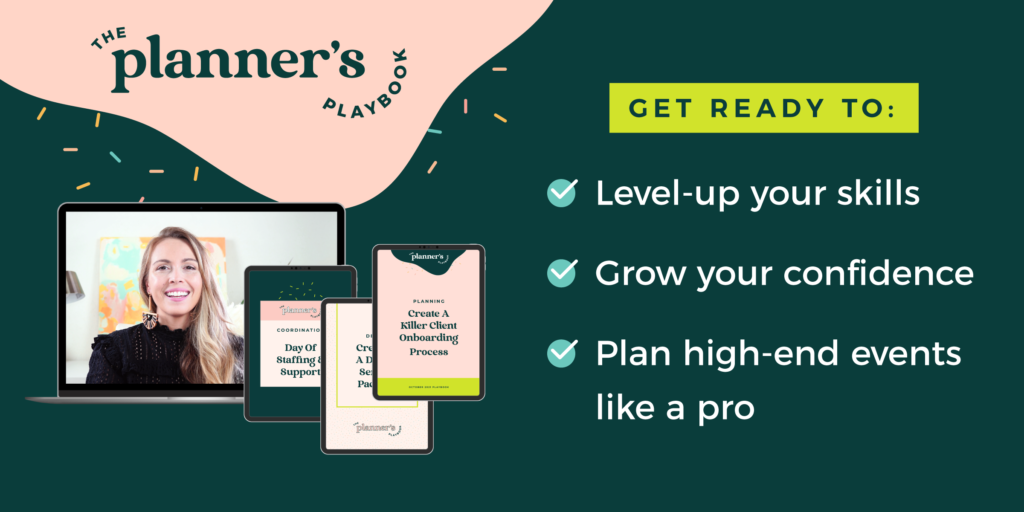
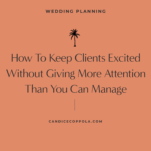
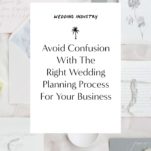



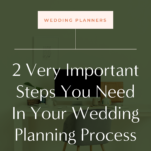
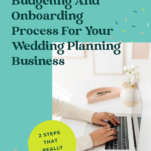

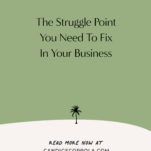
On your wedding day, people forget many things. Whether it’s your dress or something else more important like your husband’s ring or a guest’s present, that’s the reason they hire a professional. So make sure you have everything planned out ahead of time so that you don’t end up regretting any decisions you may make on the day of your wedding. There are a lot of mistakes that wedding planners make during their wedding process, including not coordinating with their vendors, not researching the budget, and not listening to their guests. These mistakes usually cost them time and money. I appreciate you sharing this blog with us.
A wedding planning process can be a very long and tedious one. And to
have a detailed budget in mind is also a significant point to discuss with clients, so you don’t overspend on anything. I liked your tips on drafting a wedding budget and will surely apply it soon. Thank you for sharing this blog with us. It was pretty helpful and informative.
This is such an insightful breakdown of the wedding planner process! Understanding the steps from consultation to execution is crucial for both planners and couples. The level of detail you provided really highlights the importance of hiring a professional to make weddings seamless and stress-free. As someone in the wedding and event planner industry, I truly appreciate the emphasis on communication and organization. Looking forward to more valuable content from you!